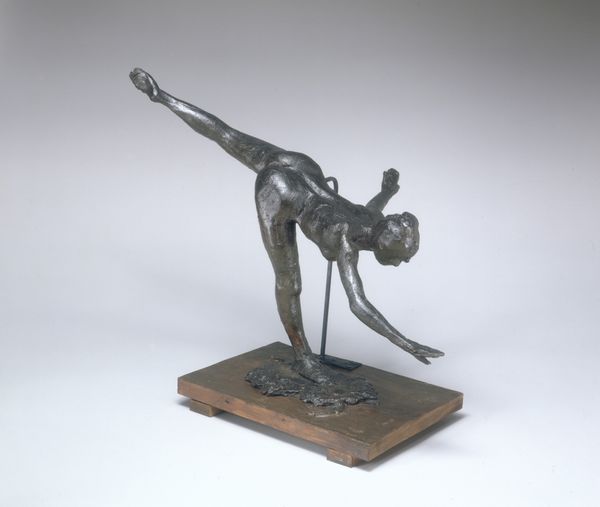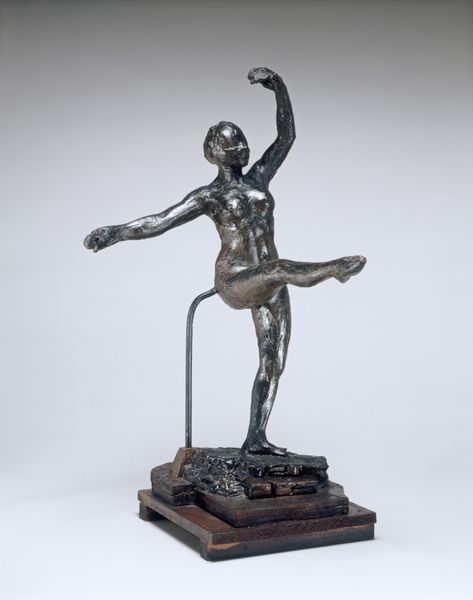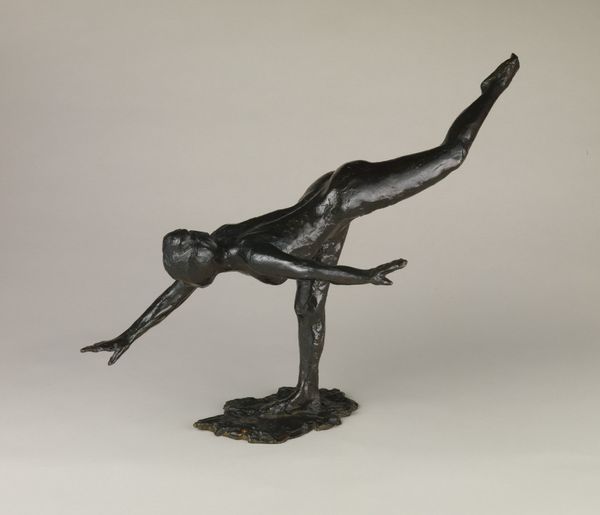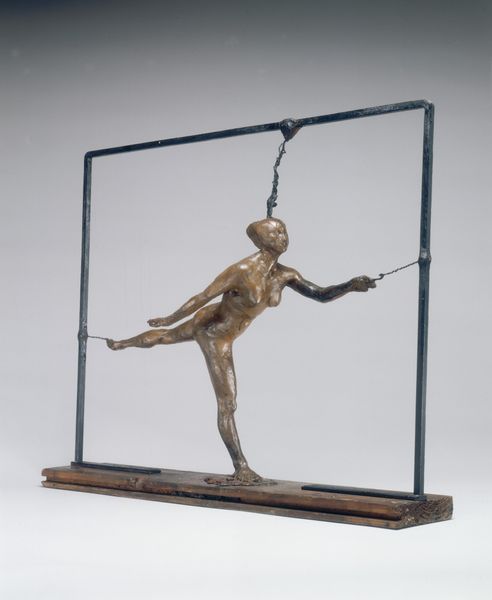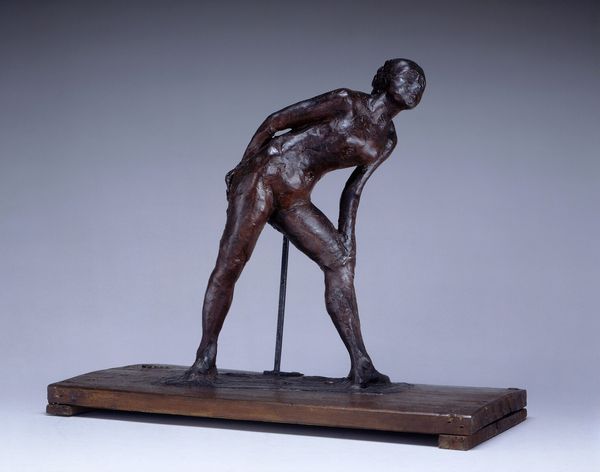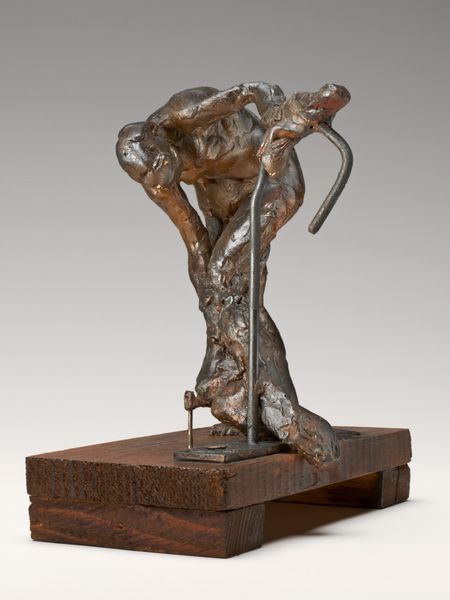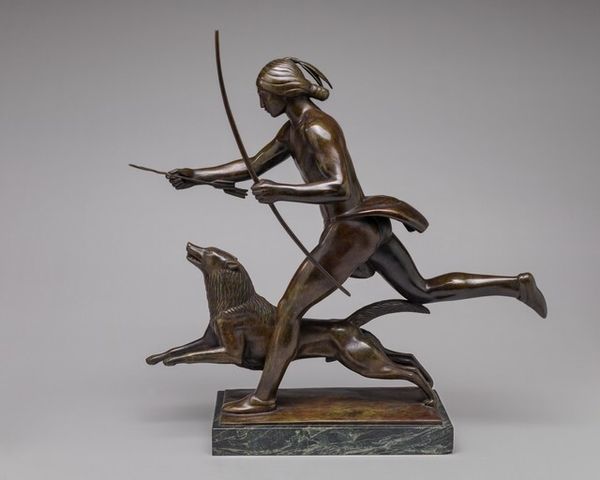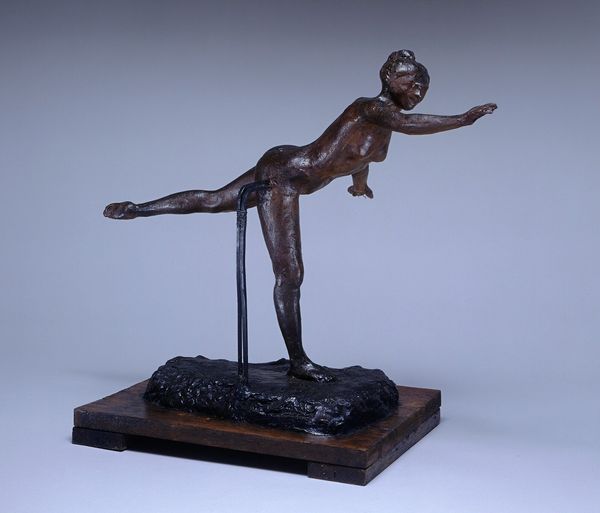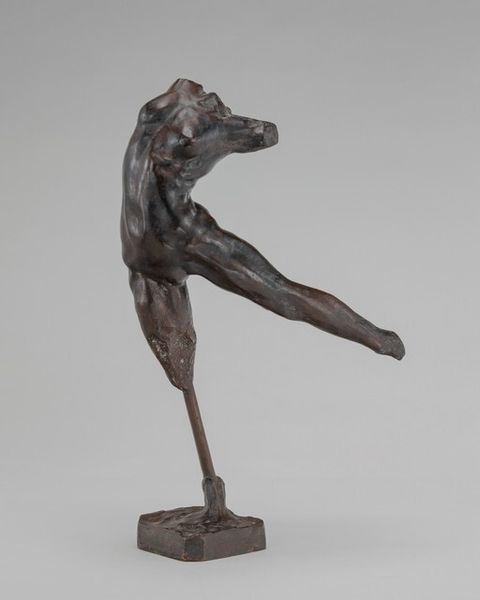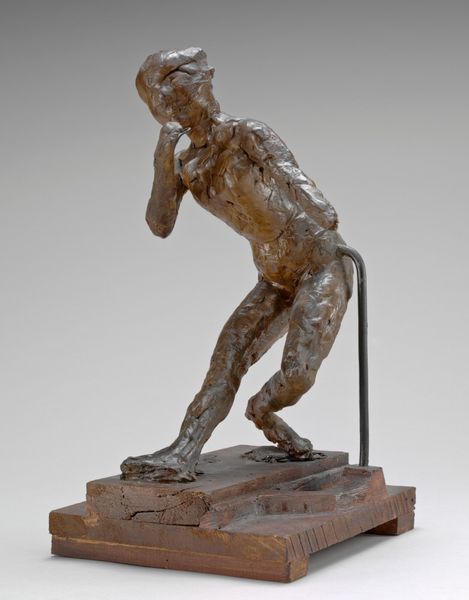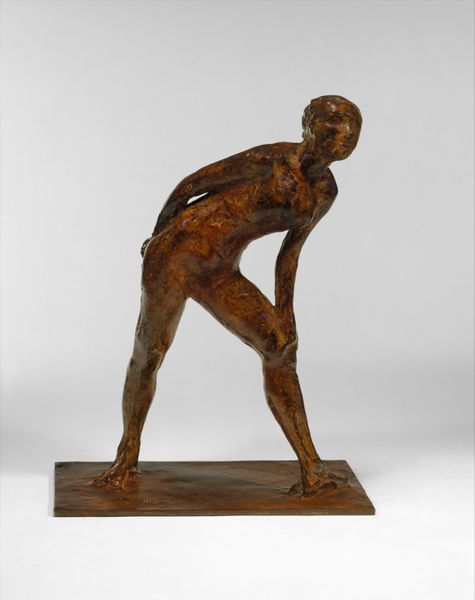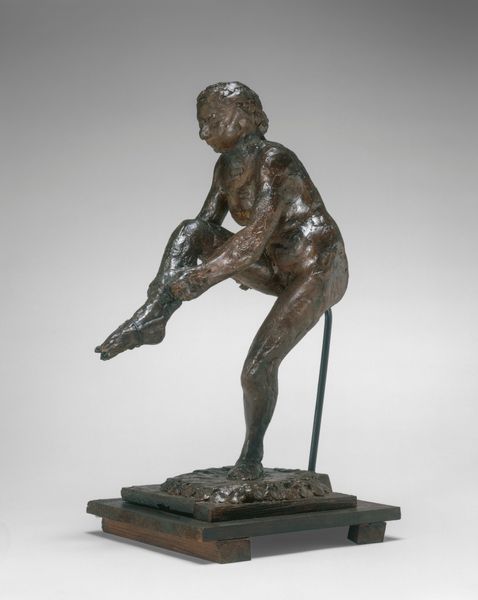
Arabesque over the Right Leg, Right Hand near the Ground, Left Arm Outstretched (First Arabesque Penchée) c. 1885 - 1890
0:00
0:00
bronze, sculpture
#
impressionism
#
sculpture
#
bronze
#
figuration
#
sculpture
#
nude
Dimensions: overall without base: 29 x 43.2 x 24.2 cm (11 7/16 x 17 x 9 1/2 in.) height (of figure): 27.8 cm (10 15/16 in.)
Copyright: National Gallery of Art: CC0 1.0
Editor: Here we have Degas's "Arabesque over the Right Leg," a bronze sculpture dating from around 1885 to 1890. I'm immediately struck by the texture of the bronze itself. It’s not smooth and idealized; it seems to capture a moment, an almost arrested motion. What’s your perspective on this work? Curator: What fascinates me is how Degas disrupts the traditional hierarchy separating fine art and craft. Consider the materiality of bronze—it's an industrial material. But he’s using it to depict something considered high art, ballet. Do you see how he foregrounds the process, almost laying bare the means of production by retaining evidence of the casting and modeling? Editor: I hadn't thought of it that way. It’s interesting that he leaves the marks of labor so visible, rather than smoothing them away. It really challenges the idea of the artist as purely a creator of beautiful forms. Curator: Precisely! And let’s think about the social context. Ballet at the time was tied to notions of spectacle and the consumption of beauty, mostly for a wealthy, male audience. So, how does making it a rough-hewn bronze change that relationship? Does it comment on it in some way? Editor: It feels more like a study than a finished, polished object of desire. By highlighting the physical making of the sculpture and resisting idealization, Degas shifts our attention from the dancer's image to the labor of its production, I suppose. It is almost a reflection of class divides and labor conditions… Curator: Exactly! He seems interested in more than just surface appearances. It leads us to consider the economic realities underpinning the world of ballet and the creation of art itself. Editor: That’s really fascinating. I hadn’t considered how much the material and process can tell us about the artist's intent and the broader cultural context. Thank you for helping me explore this piece in a completely new light. Curator: My pleasure. By focusing on materiality, process, and social context, we get a much richer understanding.
Comments
No comments
Be the first to comment and join the conversation on the ultimate creative platform.
